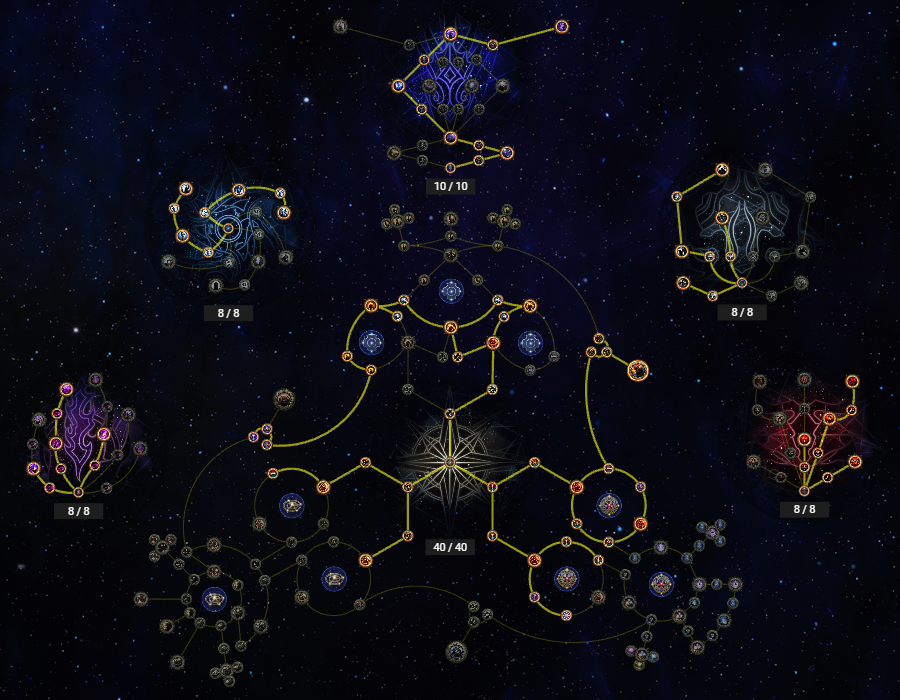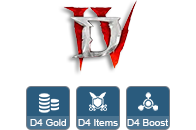How to make tons of exalts and divines quickly in Path of Exile 0.3 The Third Edict? Here, we are going to sort out the most effective currency farming methods in the Rise of the Abyssal League, including the atlas farming strategies and off-altas trading tips.
Path of Exile 2 0.3 Best Currency Farming Guide
Path of Exile 2's 0.3 patch, "The Third Edict," released on August 29, 2025, brings significant changes to the currency system. These changes include new currency tiers (regular, greater, and perfect) for orbs like Transmutation, Augmentation, Chaos, Regal, and Exalted, affecting the strength of modifiers when crafting. New currency types such as Hinekora's Lock (foreseeing crafting outcomes) and Bones (adding modifiers from Abyss monsters) are introduced. Several existing currencies are removed or reworked, including the removal of Orbs of Scouring and Chromatic Orbs, and the tiering of Jeweller's Orbs. The patch also introduces asynchronous trading via Merchant Tabs, allowing players to list PoE 2 items for sale through a proxy merchant in their hideout and enabling offline trading.
Therefore, based on the new trading system and game mechanics, we are updating the new currency farming strategy here!
1. PoE 2 0.3 Best Atlas Strategy for Currency Farming (Tablets, Towers, Map Modes, Atlas Tree, League Mechanics)
Farming, mapping, and looting items form the foundation of any currency-making approach in PoE 2. This is described as a very traditional method, involving playing through the game, farming maps, collecting loot, running trial runs, tackling juiced maps, pushing endless progression, and killing bosses for rewards. As stated, you're farming, you're mapping, you're doing your loot, you're doing your trial runs, you're farming juiced maps, you're doing endless progression, you're killing bosses, getting divines, selling those items.
Farming currency efficiently in Path of Exile 2 patch 0.3 requires understanding several mechanics, including map mods, tablets, towers, and various atlas passives. Here’s a comprehensive guide on how to maximize your currency gains in the current league.
1. Getting Your Passive Points
Unlocking your passive points is much more convenient now than in earlier patches. As you traverse the map and find corrupted areas, clearing these corrupted nexus areas will reward you with tomes granting five passive points each. You can gather up to 30 points from these, and the remaining 10 points come from completing five different unique maps across various biomes. Each unique map grants two points, and you need to make sure not to repeat the same map, as only the first completion counts. Once you collect all 40 points, you can fully spec your tree and optimize your farming.
2. Tablet Mods: The Key to Loot
When it comes to tablets, the most valuable prefix mod is quantity of items found. This mod outshines all others for increasing loot. Following that, rare monsters and item rarity are also highly desirable. More rare monsters mean more loot, as they are the primary source of valuable drops. While pack size and magic monsters can be helpful, mods that grant gold, experience gain, or rare chests are less impressive for currency farming.
Suffixes on tablets can impact certain farming strategies, especially if you’re stacking mechanics like breach or delirium. However, focusing on quantity and rare monster prefixes will yield the best returns for most players.
3. Towers: Scaling Your Rewards
Towers scale based on the number of mods on your maps and the map tier. Each tower has slots for tablets, and the more mods your map has, the more tablets you can use. For maximum efficiency, aim to run tier 16 six-mod maps, which allow you to use three tablets and double the effect of your tablet mods. If you’re not yet able to handle tier 16s, three-mod tier 15 maps are a solid alternative, and you can work your way up as your character improves.
4. Map Mods in Patch 0.3
Map mods have changed in 0.3, now mirroring PoE 1: all mods make the map harder but also more rewarding. Common beneficial mods include increased pack size, more rare or magic monsters, and increased item rarity. Notably, rarity in PoE 2 upgrades the quality of currency drops, meaning better mods can result in divine orbs instead of exalted.
Avoid mods that hinder your build, such as Chilled Ground if you’re melee, or overly dangerous mods if your build is fragile. Curse maps are less problematic since you can dodge the curses cast by the map. As you add more mods, you get more rewards, so push your limits as far as your build can handle.
5. Atlas Passive Tree Build: Key Nodes
For your first five points, take Constant Crossroads and Fortunate Path for a helpful boost when currency is tight. From there, pick up Rising Danger for more rare monsters, and consider Twin Threats to duplicate rare monsters for additional loot.
Treasure Coves is an excellent node, as rare chests can yield high-value PoE 2 currency drops, including divine orbs. Invest in Precursor Influence to maximize the number of tablets you find. As you progress, focus on nodes that increase rarity, quantity, and monster packs.
Essence nodes can be useful for crafting, but the majority of essences are low-value for direct currency farming. Wisps and shrine boxes tend to be inefficient and slow, so prioritize other mechanics if your goal is wealth accumulation.
6. Top Mechanic For Currency Farming: What to Choose
Breach: Breach is generally the top choice for currency farming, as it spawns the highest number of rare monsters. Progress up the left branch of the Breach tree, focusing on nodes that provide more splinters, monster density, and more breaches in your maps. If the increased breaches hurt your performance, adjust which nodes you take.
Expedition: While not as universally lucrative, expedition can be great for builds with large AoE, and logbooks can offer solid returns. Nodes such as Detailed Records and Disturbed Rest increase monster count and logbook value. The lower branch offers higher risk and reward, so only take it if your build is sturdy.
Boss Tree: For bossing, allocate points to increase quantity from bosses. The choice between essence, shrines, spirits, or strongboxes depends on your goals, but shrines are generally preferable unless you focus on crafting.
Delirium: Delirium maps can be extremely profitable, especially once you have a strong character and a good map pool. Early on, allocate points to slow delirium fog dissipation rather than map delirium emotion, as the latter can disrupt progression. Once established, take nodes that increase splinter drops and mirror rewards.
Ritual: Rituals can yield excellent rewards. Prioritize ominous portents for faster rituals and more omens, spreading darkness for more altars and tribute, and tempting offers for cheaper and more frequent ritual rerolls. Additional nodes can be chosen based on whether you want more monsters or more opportunities to kill rare monsters.
Abyss: Good for crafting and overlaps well with other mechanics, but is mostly passive and not something you actively set up for currency farming.
Rogue Exiles: Fun mechanically, but unable to drop currency, so they’re not a priority for wealth farming.
Early Atlas Tree for Currency Farming
Early on, focus on rare monster nodes and easy sources of currency such as treasure chests, tablets, and increased monster packs. As you approach 40 points, fill out the tree with more tablet and quantity nodes, and consider essences for crafting big items if you enjoy that aspect.

2. PoE 2 0.3 Chaos Trials Currency Farming Strategy
Chaos Trials offer a stable and accessible alternative to traditional high-tier mapping. It’s worth noting that mapping brings various unique drops, currency, and mechanics like essence and precusha tablets, but also requires a character that can handle dense monster packs and new mechanics like Abyss. Chaos Trials, on the other hand, focus more on boss fights and provide a steady flow of certain currencies, even if you skip many of the mapping mechanics.
1. Preparing for Chaos Trials
The setup for Chaos Trials is simple and doesn’t require special prerequisites. You just need a character strong enough to defeat the Chaos Trial bosses, which are tuned for a wide range of builds since these are ascendancy trials and developers want players to be able to clear them for passive skill points. If you don’t have enough Chaos Trial tokens, you can purchase them from the trade market, where they’re often sold for one exalted orb each.
2. The Gameplay Loop
Chaos Trials follow a straightforward gameplay loop. Enter the Temple of Chaos, and each room presents you with a task—usually killing all monsters or surviving for a set time. After clearing a room, you must pick a debuff before progressing. There are only debuffs in these rooms, no bonuses, but each room completed adds to your final reward. The trials include a mix of clearing rooms, survival challenges, altar puzzles, and escort missions. Every three rooms, you’ll find a well to replenish your flasks and receive a soul core reward.
Boss fights are at the heart of Chaos Trials. You’ll face three bosses on your way, always the same but possibly in a different order. For example, Ukal protects the entrance, and there’s also a big flying bird with an annoying move set, plus a relatively easy dragon boss. After defeating the final boss, you receive a guaranteed Victorious Fate, which is a key reward for this strategy.
3. Room Types and Debuff Choices
Each room type brings its own mechanics. Clearing rooms are marked by clusters of enemies on the mini-map and require defeating all foes. In monument rooms, you touch the central object and must survive for 90 seconds. Altar rooms involve finding a val part and returning it quickly to the altar, all while being pressured by debuffs and time limits. Escort missions require staying inside a moving bubble and fending off enemies. Ritual rooms have you standing in circles to fill the blood altar.
Debuff selection is a key part of the run. Some debuffs, like storm runes or escalating damage, are relatively safe, especially early on. Others, such as grasping vines or blood globals, are manageable if you play carefully. However, as debuffs stack, combinations can become deadly—upgraded debuffs like Stormcaller Runes level two or monster always crits can turn a manageable trial into a chaotic one. It’s usually best to avoid stacking dangerous debuffs early but you can risk them for the final boss if your build allows.
4. Surviving Deadly Combinations
As debuffs accumulate, certain rooms can become extremely punishing. For example, impending doom covers the area with dangerous rings, forcing you to time your movements or risk being overwhelmed. Pyramid beams and speed-boosted monsters add further chaos. When facing tough combinations, there are a few tricks: teleport out before picking your next penalty so you can replenish flasks at the encampment, and clear monsters ahead during escort missions to avoid being swarmed.
5. Profit and Rewards
After running Chaos Trials for two hours, the results show a strong yield in chaos orbs and vaal orbs, with roughly double the amount per hour compared to mapping, though with fewer exalted orbs. Most equipment drops are corrupted and unsellable, but the real value comes from the fragments, runes, and soul cores gained. Victorious Fate and other fates are used for accessing the trial master and sell for a good price on the market. Some soul cores, such as those for poison on hit or chaos resistance, can fetch up to 23 exalts. Overall, selling all trial fragments and runes yielded about 60 more exalts, and certain soul cores added even more value.
While this method yields fewer exalted and divine orbs than high-tier mapping, chaos orbs and vaal orbs drop more frequently and hold their value longer. Trials of Chaos provide a steady exalted orb income and a reliable flow of currency, as long as you can clear the rooms and bosses efficiently.
3. Best Low Budget Xesht Strategy for Currency Farming
Twisted Domains, previously known as Breach Zones, offer a highly rewarding and accessible approach for currency farming, particularly for those with limited resources or early-game gear. This method revolves around buying breach splinters, using them to open Twisted Domains, and running the highest tier for maximum returns. The main appeal is how disturbingly profitable and easy it is to run, with nearly all of the loot coming from the breach mobs themselves rather than the boss. Even with modest gear and minimal investment, you can expect substantial returns from currency drops, catalysts, and tiered rares, positioning this strategy as a perfect stepping stone for players aiming to progress efficiently.
1. Gathering Breach Splinters
Start by purchasing breach splinters, as the entry cost is extremely low. When tested, it was only one exalt for 12 breach splinters, meaning about 13 exalt per entire run, making it the cheapest entrance to any boss in the game.
2. Entering the Twisted Domain
Place the splinters in the realm gate and open the Tier 3 (max level) Twisted Domain. The process is simple: just run through it and defeat all breach mobs. At the end, all the loot from the mobs is dropped in a single pile, followed by a fight with Zesh, the boss. Most of the boss drops are kind of mid, so the primary focus should be on the loot from the mobs.
3. Preparing Your Gear
The gear requirements are incredibly low. For instance, using a 1.5 div bow and affordable armor, none of the gear pieces cost more than a div. Even with a lightning arrow DPS of just 48k, clearing the breaches is no problem. If you lock in, you probably won't die at all. Even if Zesh proves difficult, 90% of the loot comes from killing the mobs on the way to the boss.
4. Increasing Item Rarity
Make sure to stack item rarity on your character. With 111% item rarity, the loot, especially tiered rares and currency drops, increases considerably. Rarity doesn't affect the boss drop loot, but it impacts the bulk of your rewards from the breach mobs.
5. Looting and Crafting
A lot of the profit comes from dropping tiered rares and crafting on them a little. Most crafts cost no more than two div, and identifying and checking for valuable combinations like triple flats or double rarity can yield solid returns. While breach rings used to be more valuable, it's still worth identifying them for potential lucky finds.
6. Evaluating Profits
Across 50 breaches, the method generated around 22 div, with a total cost in splinters of four div, resulting in 23 div profit over three hours. This averages out to around 8 div an hour, and even with bad luck, you are making at least six div an hour, primarily from currencies and catalysts. The consistent drops of currencies, chaos orbs, exalts, and catalysts ensure steady profit every run.
7. Scaling Up
This strategy is especially good for the early levels of the game where your gear is not that good. It provides the gear upgrades needed to fully juice your maps and farm at the next level. As you scale up, you can reinvest profits into better gear or experiment with crafting for even higher returns.
4. Off-Meta Build Currency Farming Strategy
Playing off-meta builds in Path of Exile 2 can be a surprisingly effective way to generate a large amount of currency, especially early in a league. This approach not only keeps gameplay fresh and fun but also lets you avoid the high cost of popular meta builds, freeing up resources for crafting and trading. Here’s a detailed look at the farm methods and strategies that have led to impressive currency gains in the first ten days of the 0.3 league.
1. Which Off-Meta Build To Choose?
Choosing off-meta builds makes it much cheaper to gear up, as the demand for these items is lower. Playing Storm Weaver for the first time, focused on cold infusion, turned out to be much more cost-effective than chasing expensive meta builds. Most players are running lightning, but cold skills are underrated and save a lot of money just by focusing on freeze skills.
The main mobbing skill is Ice Nova, which clears packs of monsters quickly. This skill also triggers Frostbolt through cast on ailment elemental effects, letting projectiles sweep up any monsters that might be left behind. The AoE coverage from this combination ensures efficient clearing, regardless of monster positions.
Against tougher monsters, the approach is to drop Frost Bomb and apply Elemental Weakness for cold exposure and reduced resistances, making it easy to burst down rares. For elite enemies, setting up an Ice Wall and following up with Comet delivers heavy damage to finish the encounter quickly.
The build leverages Archmage for extra damage, thanks to a large mana pool (2.8k). Turning Archmage on boosts damage from 50k to 76k, a massive 50% increase. Mana recovery mechanics, such as “recover mana on kill,” ensure resources are always available.
2. Gear and Upgrades
The gear is high-end but was assembled within the first ten days of the league. The weapon is a crafted cold wand with +2 spell skills, costing hundreds of divines to make. This investment paid off due to the huge DPS increase from the new patch scaling with spell levels.
For the off-hand, a focus with +3 to all spell skills was purchased early in the league for about 20 divines. This item provides good cold and spell damage, plus some energy shield and mana. Although the energy shield isn’t fully optimized, the focus remains highly effective.
Helm and robe choices focus on resistances, intelligence, and maximizing energy shield, while prioritizing mana regeneration through specific base types. Boots and gloves were self-crafted for 100% effect of socketed items, showing that crafting your own gear can be both quick and profitable.
Rings and amulets are damage-focused, with cast speed, spell speed, and mana stats taking priority over resistances. The amulet has multiple offensive lines, and the main ring (Kundra’s Touch) is mirrored for maximum benefit. The belt is chosen for resistance and ingenuity bonuses, shifting even more stats toward offense.
3. Passive Tree and Mana Management
The passive tree emphasizes mana regeneration, maximum mana, and essential keystones such as Eye of Storms. Key equipment grants lightning and cold resistance, plus maximum spirit and mana, supporting both Archmage and cast on ailments. With over 200 spirit even without a spirit body, the build is set up for large resource pools and strong scaling.
4. Farm Methods and Currency Strategy
The focus on off-meta skills and self-crafted gear means lower upfront investment and higher returns from crafting for meta builds. Running full ice is both efficient and profitable, as cold-based gear and skills are in lower demand, making acquisitions cheaper.
By documenting and sharing every step of gear crafting and build development, it’s possible to replicate this approach for consistent currency farming. The strategy includes buying and crafting underpriced gear, selling into meta demand, and optimizing damage and clear speed using less popular but highly effective mechanics.
5. PoE 2 0.3 Best Trading Strategies To Make Divines
Making currency efficiently in Path of Exile 2's 0.3 patch can be straightforward with the right approach. Here are proven trading strategies to help you earn divines quickly, using practical market approaches and simple crafting techniques.
Strategy 1: Profiting from Tier 15 Maps with Abyssal Modifier
One of the most reliable ways to earn a steady profit is by trading tier 15 maps. The market offers thousands of these every hour, making them easy to acquire at around one exalt each. The process starts with purchasing these maps and then applying Preserved Vertebrae to them. The goal is to roll the "area is overrun by the abyssal" modifier, which is not difficult to hit after a few attempts.
Maps with this abyssal modifier can be resold for 60 up to 75 exalts each. In practice, hitting six of these maps resulted in a profit of 9.5 divines within just 15 minutes. Even the maps that do not get the desired modifier are profitable; buying at one exalt and reselling for 1.5 exalts each is possible, with buyers found within minutes using community Discord channels. Selling maps quickly is realistic, and there’s no need to undercut the market to make sales.
Strategy 2: Trading High Rarity Maps
The second method focuses on trading maps with at least 60% rarity. These can be bought for one to two exalts each, with a bit of patience yielding more for one exalt. After purchasing, these maps are modified using Preserved Vertebrae, aiming for the abyssal bonus. They are then upgraded to 100% rarity and vaaled for additional value.
Selling these high-rarity maps is straightforward; three maps sold for one divine each, with others going for seven exalts. Some 100% rarity maps were listed for 13 to 14 exalts and sold within an hour. Even lower-tier or bricked maps can be sold for one or two exalts, ensuring there is little risk of loss.
Realistic Profits and Market Tips
From hands-on results, it is possible to make five divines within 40 minutes, and earning five to seven divines in an hour is realistic if you get a bit lucky. The supply of tier 15 maps on the market is high, so acquiring inventory is never a problem. Selling crafted or high-rarity maps is fast, often taking less than a minute to find a buyer for in-demand items.
6. Crafting for Profit
Crafting is another core avenue for currency, offering both complexity and opportunity. There are many ways to approach crafting, and even those new to it can start with beginner guides. The advice here is to look for basic guides to get into crafting, mentioning that with the latest omens and desecration crafting, there are many methods available. Crafting timeless jewels, for example, has been a reliable source of income, with the text noting, I have some of the very powerful timelessness truths in the game giving me tons of spirit.
How to Do:
Study beginner crafting guides to learn the basics, then progress to more advanced recipes.
Collect crafting materials through mapping and trading.
Focus on crafting items with high demand, such as timeless jewels or energy shield boots.
Use omens, desecration, and target seed farming for deterministic results and better odds.
Sell successful crafts for divines, or use them to upgrade your own character.
Keep an eye on the market and adjust your crafting focus based on what’s currently popular and profitable.
7. Targeted Boss Farming for Support Gems
Certain bosses in the atlas reliably drop valuable support gems, making targeted boss farming a profitable strategy. The guide notes, there are three types of atlas p types of the deadly boss you can find on the other note, and for each of them, there's a guaranteed loot table. For example, the sealed vault boss can drop three support gems, one of which, blood letting, is worth several divines.
How to do:
Identify deadly bosses on the atlas with guaranteed loot tables for support gems.
Progress through adjacent atlas nodes to access boss encounters, meeting specific unlock conditions.
Purchase required idols from the trade site if you can't find them through mapping.
Enter the vault and defeat the boss for a guaranteed support gem drop.
Calculate the cost of idols versus the value of potential gem drops to keep your farming efficient.
As noted, if your investment of the idol is less than one divine, you're statistically making a profit because of the three in one chance of getting a three divine item.
8. Gambling and Corrupting
Gambling is a big part of PoE 2’s economy. It involves using chance orbs, vaal orbs, omens, and sanctification for a shot at jackpot upgrades like plus one level, extra sockets, or powerful corruptions. The guide mentions people are looking for stellar ops plus chance ops to get the astromementus and describes the attempt to create headhunters from heavy belts using chance orbs.
How to do:
Accumulate gambling currencies such as chance orbs, vaal orbs, omens, and sanctification.
Target bases that can result in valuable outcomes, like heavy belts for headhunters or boots for extra sockets.
Use vaal orbs to try for valuable corruptions, such as additional sockets or plus one skill level.
Certify items with sanctification for a chance at even stronger mods.
List jackpot results for sale, or keep them for your own use if they fit your build.
Recognize that gambling can be risky, but the payoff can be massive if you hit a valuable item.
9. Random Events and Special NPCs
Occasionally, you’ll encounter random events or NPCs that can yield high-value rewards. The guide points out that there’s an NPC that is guaranteed to sell unique items that have a chance of spawning and giving you uber unique items like head hunter, which is a bonus. It also highlights rituals as a source of jackpot items, such as headhunters or even mirrors.
How to do:
Always check ritual rewards in your maps and try to accumulate enough ritual points to defer high-value items.
Seek out Elder Maddox and inspect his unique item shop, especially if you might have skipped him during campaign progression.
If you haven’t found this NPC, return to earlier zones and look for the white question mark on your map.
Check all unique items offered for sale, as some can be worth several divines.
Take ritual passives that increase your chance of seeing valuable rewards.
Be ready to list any jackpot items you acquire right away for maximum profit.
 Home
Home
 Google Safe
Google Safe


 0
0









![Beast[Berserker Axe][Random]](/Images/D2/waraxe_graphic.png)






![Archon Plate[3S & 10-14 ED]](/Images/D2/lightplate_graphic.png)









 Follow us on Discord
Follow us on Discord
